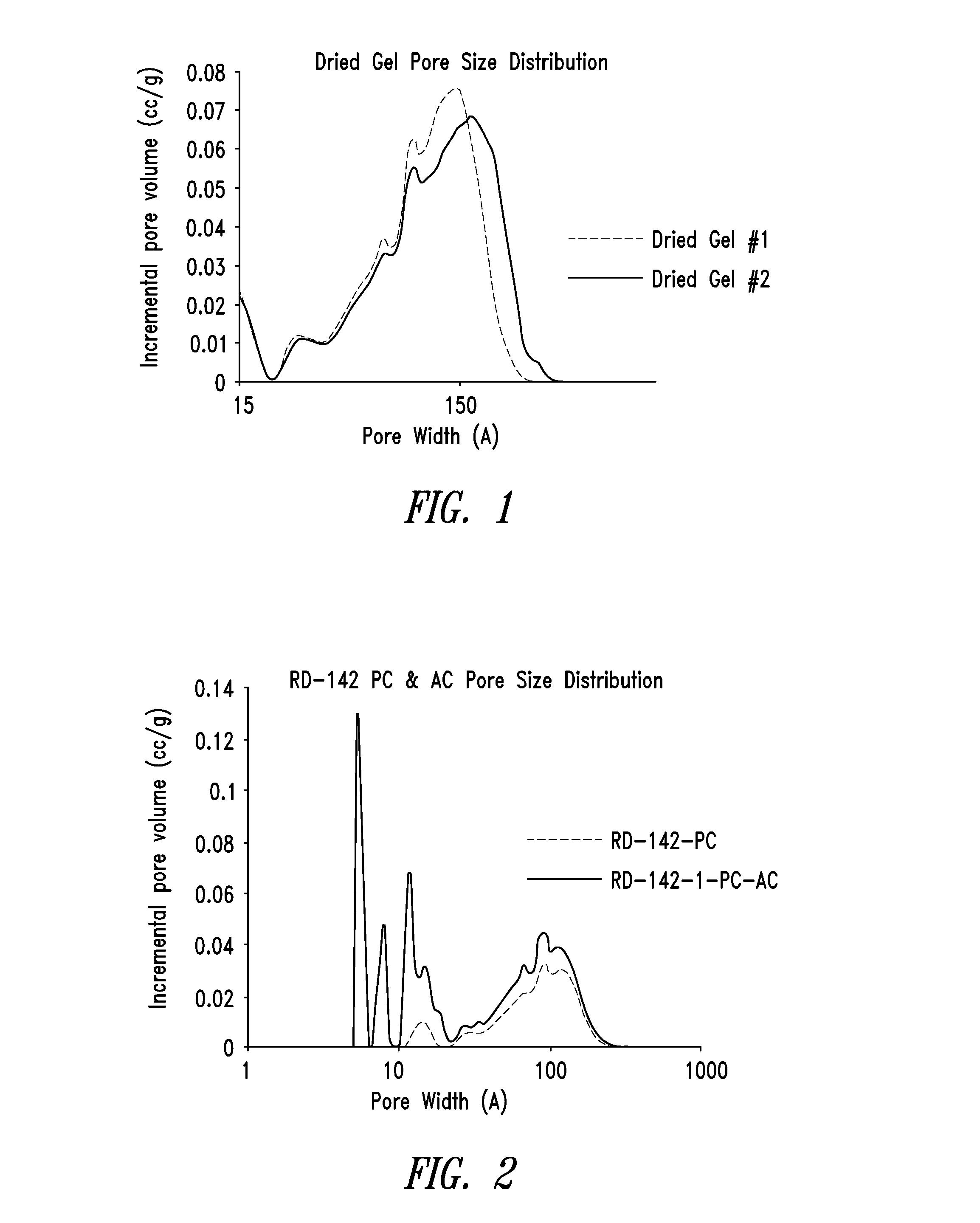Carbon materials comprising enhanced electrochemical properties
- Summary
- Abstract
- Description
- Claims
- Application Information
AI Technical Summary
Benefits of technology
Problems solved by technology
Method used
Image
Examples
example 1
Preparation of Dried Polymer Gel
[0284]A polymer gel was prepared by polymerization of resorcinol and formaldehyde (0.5:1) in a water / acetic acid solvent (75:25) in the presence of ammonium acetate catalyst. The resorcinol to solvent ration (R / S) was 0.3, and the resorcinol to catalyst ratio (R / C) was 25. The reaction mixture was placed at elevated temperature (incubation at 45° C. for about 6 h followed by incubation at 85° C. for about 24 h) to allow for gellation to create a polymer gel. Polymer gel particles were created from the polymer gel and passed through a 4750 micron mesh sieve. The sieved particles were flash frozen by immersion in liquid nitrogen, loaded into a lyophilization tray at a loading of 3 to 7 g / in2, and lyophilized at approximately 50 mTorr. The time to dry (as inferred from time for product to reach within 2° C. of shelf temperature) varied with product loading on the lyophilizer shelf.
[0285]The mass loss on drying the polymer gel was 73.4%. The surface area ...
example 2
Preparation of Pyrolyzed Carbon Material from Dried Polymer Gel
[0286]Dried polymer gel prepared according to Example 2 was pyrolyzed by passage through a rotary kiln at 850° C. with a nitrogen gas flow of 200 L / h. The weight loss upon pyrolysis was determined to be 56.2%
[0287]The surface area of the pyrolyzed dried polymer gel was examined by nitrogen surface analysis using a surface area and porosity analyzer. The measured specific surface area using the standard BET approach was 726 m2 / g, the total pore volume was 0.71 cc / g and the tap density was 0.42 g / cc. Carbon materials comprising different properties (e.g., surface area, pore structure, etc.) can be prepared by altering the pyrolysis conditions (e.g., temperature, time, etc.) described above.
example 3
Production of Activated Carbon
[0288]Pyrolyzed carbon material prepared according to Example 2 was activated a batch rotary kiln at 900° C. under a CO2 for 660 min, resulting in a total weight loss of 64.8%.
[0289]The surface area of the activated carbon was examined by nitrogen surface analysis using a surface area and porosity analyzer. The measured specific surface area using the BET approach was 1989 m2 / g, the total pore volume was 1.57 cc / g and the tap density was 0.28 g / cc.
[0290]FIG. 2 shows an overlay of the pore size distributions of the pyrolyzed carbon material of Example 2 and the activated carbon material of Example 3. Note that the pore size distribution for the activated carbon was measured on a micromeritics ASAP2020, a micropore-capable analyzer with a higher resolution (lower pore size volume detection) than the Tristar 3020 that was used to measure the pore size distribution for the pyrolyzed carbon.
[0291]From the DFT cumulative volume plot for the activated carbon m...
PUM
 Login to View More
Login to View More Abstract
Description
Claims
Application Information
 Login to View More
Login to View More - R&D
- Intellectual Property
- Life Sciences
- Materials
- Tech Scout
- Unparalleled Data Quality
- Higher Quality Content
- 60% Fewer Hallucinations
Browse by: Latest US Patents, China's latest patents, Technical Efficacy Thesaurus, Application Domain, Technology Topic, Popular Technical Reports.
© 2025 PatSnap. All rights reserved.Legal|Privacy policy|Modern Slavery Act Transparency Statement|Sitemap|About US| Contact US: help@patsnap.com



